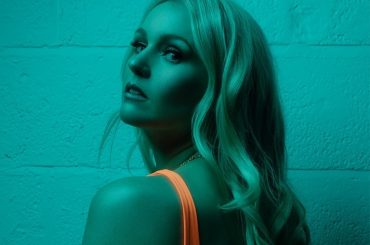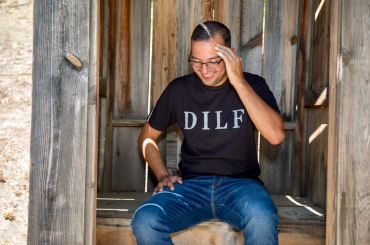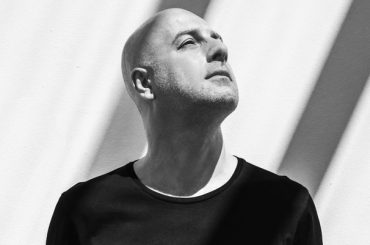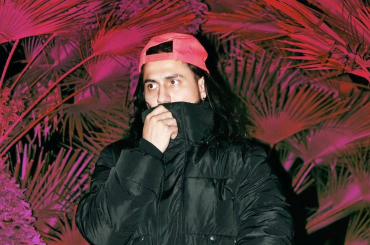Still shut out from groovy gatherings and the genuine human connections they can afford? Seeking some primo lockdown music to soothe things? Then, look no further than Desire, the latest from electronic duo Bob Moses.
After conceiving the project as a soundtrack to a club afterparty, the Canadian tandem – Jimmy Vallance and Tom Howie – delivered a six-song beauty of an EP. Loaded with lush, melodic, house-leaning nuggets like the ethereal title track – an earworm collab with ZHU – Desire offers an occasionally melancholy, yet timeless quality that creates a distinctly deep mood, rewarding repeated listens.
We caught up with DJ/musician/producers Vallance and Howie to discuss their approach to the EP, their creation process and, of course, some tech.
DJ Times: How have you guys spent the lockdown time? It’s turned out to be a very strange time to be releasing an album.
Tom Howie: It is a strange time indeed! We’ve been using the downtime to make more music in the studio. It’s the longest stretch in seven or eight years that we haven’t been on a plane or traveled somewhere for a show, which definitely feels a little weird. We miss the connection with audiences, but we’re trying to make the best of it and get lots of work done in the studio. It’s nice to be able to really sink into a rhythm uninterrupted and explore creatively.
DJ Times: What was your approach to this new release, Desire?
Jimmy Vallance: It happened naturally and sort of coalesced around the concept as we were making it. We made most of it while we were on tour with our band in support of our last album, Battle Lines, and we were playing lots of after-parties and DJ sets, just the two of us, and wanted to make some dancefloor-focused tracks to play during those sets. Once the track with Zhu came together, and as we started writing the lyrics to the other songs, it seemed as though we were writing about “desire” and its many faces…
Howie: How it can set you free or lead you to ruin, how we project our desires onto others, where these desires come from and what chasing after them really means, etc., etc. And we had always wanted to make the EP flow together like a DJ set, because we were making the tracks for that purpose. So the concept kind of formed as a process of making the music. It was a really fun way to have a bunch of tunes come together and we are proud of the cohesiveness of it.
DJ Times: On the title track, how did your collaboration with Zhu work?
Howie: We met Zhu on Holy Ship! a few years ago when we were both playing, and we hit it off backstage. He’s a really great guy. We kept in touch after that and we had booked a studio in L.A. for the few days off we had between shows. He was in town and we just linked up to see what would happen. Things really flowed well and we got most of the track together in that one session.
DJ Times: Who brought what to the track?
Howie: The idea really started coming together around those chord stabs that he suggested. We both went in and sung some stuff, each inspiring the other and ending in what we eventually came up with. His vocals add a really nice lift in the chorus – he sings the high part. It was a great collaboration because it really was all of us contributing equally and riffing off each other to find our final destination.
DJ Times: Which instruments do you two play and what are you most proficient on?
Vallance: We both play the guitar, drums, piano and bass. I’m more proficient on drums and piano and Tom is that way on guitar and bass.
DJ Times: What’s the DJ background of the two of you?
Howie: Jimmy has been DJing since he was 15. He got into trance first and then found his way to other styles. I didn’t learn to DJ until I started going to warehouse raves in Brooklyn – so, around age 21, 22. We both had fake IDs in high school and were playing clubs downtown during the week. I was in rock clubs and Jimmy was at more typical nightclubs. We’d both show up to high-school art class – the only class we shared – tired and hungover during the week. We always respected each other as the other music guy really “doing it,” or so we thought back then.
DJ Times: At what point did you become comfortable DJing in front of a crowd?
Howie: Jimmy learned his chops doing those opening sets and so was always comfortable in front of crowds from then on. I was already a seasoned performer by the time I started performing as a DJ, so I was more comfortable with being in front of people once I had gotten my basic mixing chops up. Also, I got to learn all of Jimmy’s tricks from years of doing it! But we started DJing together at after-parties in Brooklyn where everything was a little sloppy and everyone quite forgiving, and everyone was just focused on having a really great time.
DJ Times: How does Bob Moses prepare for its club or festival DJ sets?
Vallance: We’re both always listening to tons of music and saving things in playlists. Now with the way that Spotify, Apple Music and Beatport are organized, listening and saving tracks for later is super-easy and seamless. We also love to check out vinyl shops whenever we can – and if we hear stuff we love, we will buy it and record it, so we can play it digitally later. We’ll usually play each other tunes and come up with a basic vibe we want to go for beforehand, depending on the venue and the lineup or where we are. But generally, we just wing it.
Howie: A lot of choosing tracks is what we feel in the moment based on our interaction with the crowd. We know that most of the time we will play a few of our original tunes, and generally we want to keep our sets within the range of what will fit with those tunes. But a lot of the fun of DJ sets is being able to go where you feel like going and not be stuck to a set list.
DJ Times: When you play a live show, as opposed to a DJ gig, what gear are you using onstage?
Vallance: When we play a live set now, it’s with our band, so that is a big operation. We have a crew of a few people doing monitors, in-ears, running playback, front-of-house, etc. Beyond the instruments and amps for bass and guitar, and the live vocal mics, we have a live drum set mic’d up, as well as triggers on several drums and auxiliary pads triggering various samples and loops from each song. My keyboards are linked through to the two laptops running Ableton we have off-stage – one main one and one backup – which cues all the different keyboard sounds and drum triggers for each song.
Howie: Each duplicate system is linked through a device that will immediately and seamlessly – in theory – switch to the other one that is mirroring it, in case that the first one fails. It’s also cueing a lot of the lights and visuals. We have one of our crew running that during the show to make sure it all goes well. Basically, it’s a big operation that would take a lot more time to explain the inner workings of, but it’s a lot of fun once it’s all running smoothly!
DJ Times: For a DJ gig, what do you require in the booth?
Vallance: We’ve had various setups through the years. We started running Ableton Live with clips of all our own music and then having live vocals and guitar running through an Allen & Heath ZED-10FX mixer, playing our sets that way. We also used [Native Instruments] Traktor Kontrol vinyls at one point. Now we use two Pioneer CDJs with USB and a Pioneer DJM-850 mixer. We also have a laptop with an Ableton project open with vocal and guitar processing on two channels and a [Universal Audio] Apollo Twin interface. We put guitar and vocals in channels 1 and 2 on the mixer, and then the CDJs in 3 and 4. We have made instrumentals of our songs without the vocals and guitar in them, so that we can play them on the CDJ and Tom can play the vocals and guitar parts live. Then we can also just DJ back-to-back and we can choose to play our own songs whenever we feel like it.
Howie: We use a pair of headphones to mix and then I have in-ears that I can put in for when I’m singing, and I use the cue/mix blend function on the mixer to get the blend of my vocal and the track right to make sure I can hear himself and sing well. There was a bit of a learning curve, in terms of making this new system work, but now that we are in the flow we absolutely love the flexibility it provides.
DJ Times: Which producers are exciting you now?
Howie: Durante is really great. Tibi Dabo is awesome. Romare makes super great stuff – also Rival Consoles. We just love all of them and the music they make. There are many more, of course, but those are some that come to mind.
DJ Times: Which producers influenced you in the beginning?
Vallance: As far as who influenced us, tons of people, but when we were starting out, Francis Harris did a lot. Also, Nicolas Jaar, Weval, Black Light Smoke, Maya Jane Coles, Jamie XX – the list could go on forever…
DJ Times: Which DJs impress you? To you, what makes a great DJ?
Vallance: Daniel Bell, Ricardo Villalobos, Sasha, Four Tet, Marcel Dettmann, Seth Troxler, Lee Burridge. The list goes on, but those are some that immediately come to mind. A great DJ is someone who has their own style, but that takes you on a great journey that is filled with moments expected and unexpected. All of these DJs do that really well every time we’ve seen them.
DJ Times: What’s in your studio?
Howie: We use Ableton to write and record, and we mix in Logic or Pro Tools. We sometimes track vocals in Pro Tools as the playlisting functionality is great. We use a [Universal Audio] Apollo 8 interface. We have our synths routed through an Allen & Heath ZED-10FX. We use a Sonic Summarizer by Vintage Tools for summing. We have a Brent Averill Neve 1073 clone for a pre-amp, which we love.
Vallance: For synths, we believe in “less is more” and really getting the most out of each one. But we use, amongst others, a Moog Subsequent 37, Korg Minilogue, microKORG, OP-1, Nord Lead, [DSI] Prophet 08, MFB 522, Bolsa Bass by Critter & Guitari, and a whole bunch of guitar pedals that we love to run things through to give them a unique sound. For plug-ins, we use a lot of the Waves bundle, Native Instruments, Soundtoys, XLN Audio RC-20 Retro Color, Valhalla DSP Reverbs, FabFilter and some others. For monitors, we use KRK V8s with a sub. That’s a good snapshot of most of what we use.
DJ Times: Is there a studio product that you’re especially loving now, one that helps you get unique sounds?
Howie: The Sub 37 and Minilogue for synths and Valhalla Reverbs and Soundtoys plug-ins are all fantastic, and we use them on almost everything we do.
DJ Times: What’s the creation process for Bob Moses? How do you two work together?
Vallance: Sometimes we’ll start an idea from scratch, but more often than not, we’ll bring an idea in to the other person in some form. Whether that is a loop of drums with a basic chordal/melodic idea, or sometimes a song on guitar or piano, or a melody idea on its own. Or sometimes it’s just an idea like, “Hey, I like this track – we should make something sorta like it.” And then we’ll basically just collaborate on it back and forth until we either get stuck or finish it, or at least get it to a place that we know what needs to be done to finish it.
Howie: Like if it has a scratch vocal and we know we have to re-cut real vocals. We’ll take turns at the computer editing, or recording the other person. Basically, we’ll let one person take the lead for a bit and guide them and then switch off, or if one of us is onto something just make suggestions. We sort of mind-meld and often end up finishing each other’s musical sentences, so to speak.
DJ Times: What do you think it’ll be like for DJs and electronic musicians when we can begin to gather again? Will fans still tune into the live-streaming mixes? What future do you see?
Vallance: We think that once the world opens back up, people are going to be so starved for connection and interaction that it’s going to be one of the best years ever for live music and events. We can’t wait!
DJ Times: How do you see festivals and club venues adapting/evolving?
Howie: Well, hopefully the government can offer them some support and help them get through until we can gather with them again. Sadly, some won’t survive, which sucks. We really don’t know what the right solution is or how it’s all going to work, but all we can say is we hope for the best and we hope that as a community of musicians, producers and music lovers we can all come together to support each other and carry us through this horrible mess we’re in.
DJ Times: What’s next for Bob Moses?
Vallance: We are working on new music and patiently waiting for the day that we can travel the world to play for our fans again.
To check out more interviews, click here.
DJ Times Magazine is copyright © 2020 by DJ Publishing, Inc. www.djtimes.com








